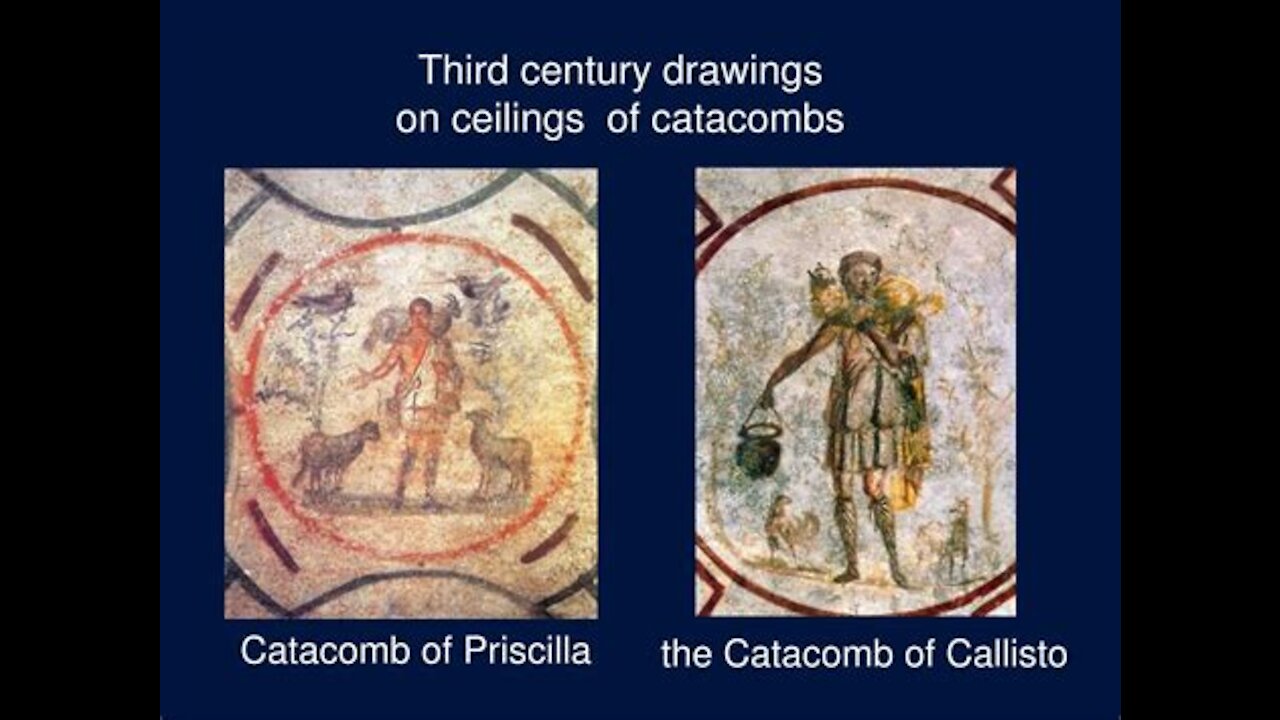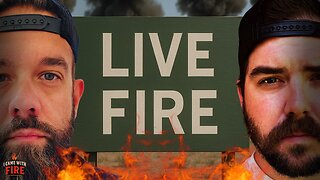Premium Only Content

Catholic Art What is it? IV
313 Edict of Milan
Heresy Iconoclasm, 726-843 AD 2 waves of outbursts of destruction because of a rigid interpretation of the second commandment.
One aspect of the debate centered on the duality of Christ. As God, the second commandment prohibition of graven images was in play. As Man it was not. It was then thought since Jesus as purely Man is what is being displayed, the heresy of Nestorianism was committed. Additionally, Monophysitism, the mixing of the two natures of Christ was opposed to He was both Divine and human without mixture was also thought to be evidenced with sacred images. It was these two heresies that some scholars think fueled the iconoclasm of the East.
The West (Carolingian dynasty) and the Pope did not succumb to this destruction. Rather the art center of the East, Byzantine (Constantinople) did. This division acerbated the growing division between the East and the West Church. Some historians believe the rise of Islam and its military victories inspired the sentiment to destroy man made images of the sacred. Other historians think an exaggerated attachment of sacred art led to a back lash. The reasoning of why the iconoclasts’ outbursts occurred is the subject of intense debate.
Church’s reasoning middle course between prohibition of sacred images and Orthodox position that the images partook in some degree the nature of the thing represented. The images were just objects made by craftsman to elevate the mind of the worshipper. Some Protestants today claim we worship Mary due in part to the statues and paintings found in Churches. They serve to remind the faithful who is both body and soul of the truths of God. Only God is worshipped, Mary is venerated or honored.
Pictures of family members in the homes does not imply worship. Far too attached to graven images, obsessed encapsuled with film.
Ex/ Sons pictures, no pictures, hired photographer. Wanted to live it. Balance Carolingian can have cake and eat it too. Not either/or for us.
2nd Council of Niceae 787
On October 13, 787 the Second Council of Nicaea decreed that 'venerable and holy images are to be dedicated in the holy churches of God, namely the image of our Lord and God and Saviour Jesus Christ, of our immaculate Lady the holy Theotokos, and of the angels and all the saints. They are to be accorded the veneration of honour, not indeed the true worship paid to the divine nature alone, but in the same way as this is accorded to the life-giving cross, the holy gospels, and other sacred offerings' (trans. Price, The Acts of the Second Council of Nicaea [Liverpool 2018], 564-5, abbreviated).[1]
Wide latitude in human mind can comprehend differences. Becomes juvenile to see a statue then say you worship that.
Tiresome, canard, accusation at this time. Find something more creative. Veneration, not worship.
[1] https://en.wikipedia.org/wiki/Byzantine_Iconoclasm accessed October 5, 2021
-
 11:05
11:05
Fides et Ratio
1 year agoIgnatius’ Rules for Discernment Journey to God VII
543 -
 2:44:12
2:44:12
I_Came_With_Fire_Podcast
1 day ago*BREAKING* Special Guest Katarina Szulc
32K5 -
 3:22:20
3:22:20
megimu32
6 hours agoOFF THE SUBJECT: FAFO Friday! Bodycams & Mario Kart Mayhem!
21.6K4 -
 55:36
55:36
Flyover Conservatives
1 day ago4 Strategies to Create Opportunity from Nothing - Clay Clark | FOC Show
27.3K -
 1:49
1:49
Gaming on Rumble
11 hours agoWhat is the Rumble Creator Program!?!? (Active Premium Creators) | Lvl UP
27.3K2 -
 5:56:26
5:56:26
Midnight In The Mountains
8 hours agoGaming w/ PER·SE·VER·ANCE | Midnights Play Fortnite | Split Screen Action!
18.2K2 -
 3:56:17
3:56:17
Nerdrotic
10 hours ago $13.80 earnedLet's TACO-bout Take Us North, Hollywood COPE! Cracker Barrel CRACKED! | Friday Night Tights 369
95.2K8 -
 1:16:30
1:16:30
RiftTV
9 hours agoHow Blue Light is Turning You Gay | The Rift | Guest: Jack Kruse
32.9K10 -
 LIVE
LIVE
Eternal_Spartan
16 hours ago🟢 Eternal Spartan Plays Final Fantasy 7 Remake Intergrade | USMC Vet | Join the Best Chat on Rumble
48 watching -
 LIVE
LIVE
MissesMaam
6 hours ago*Spicy Sips* Friend Friday with Mally_Mouse and Friends!!! 💚✨ (part 2 stweam crashed)
43 watching